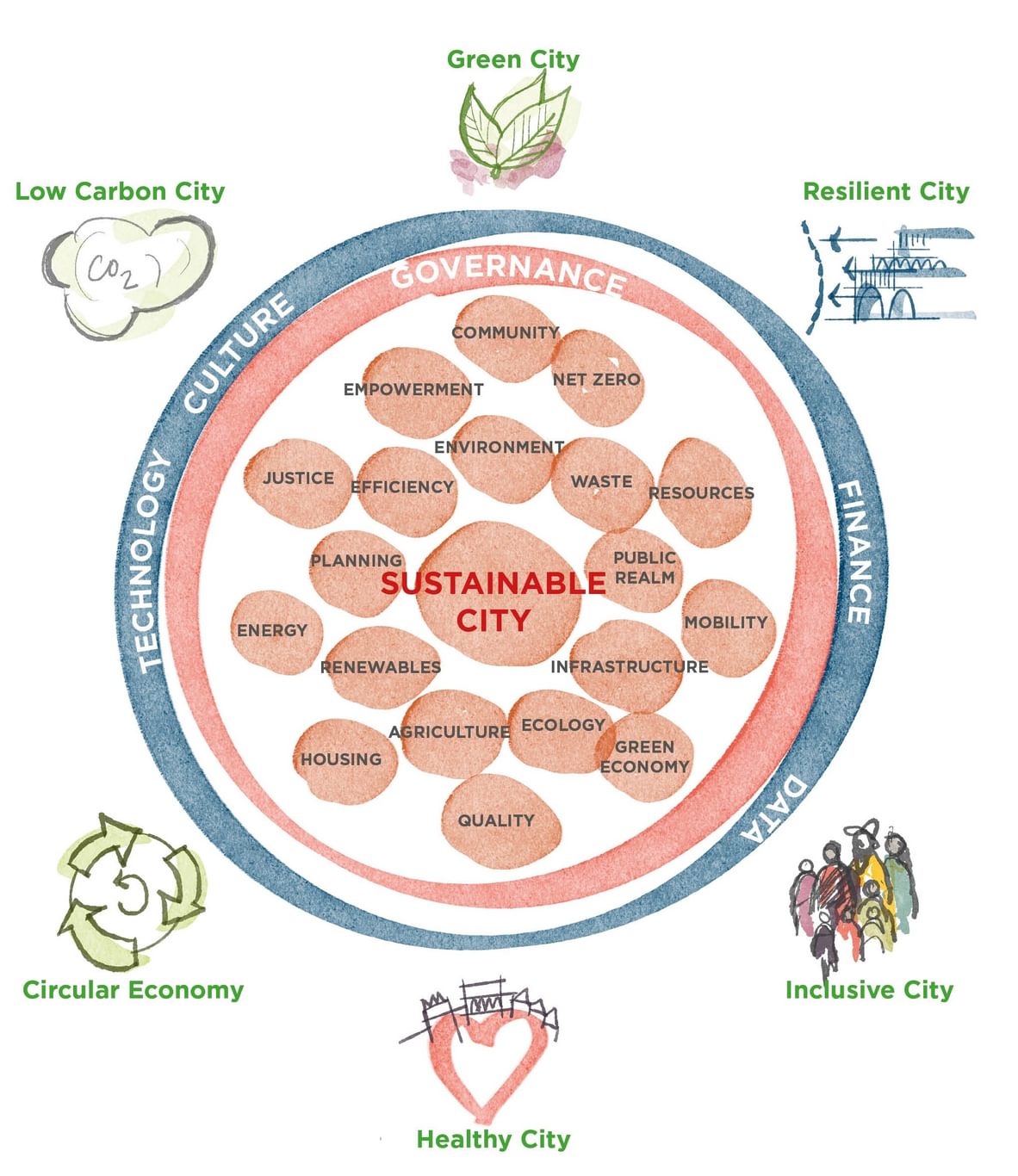
Sustainable Masterplanning – A Brief Guide
Our Responsible Design Group comprises Sector Champions from each of our core sectors - Masterplanning, Mixed-use, Retail, Residential, Leisure, Workplace, Hospitality, and Transportation. The Sector Champions are dedicated to researching and communicating our Responsible Design approach unique to each Sector.
In this article, Daniel Morgans, an Associate Director, and Stella Papaspyrou, a Senior Architect in our London Studio, provide a concise study on Sustainable Masterplanning – the practice of assembling large mixed-use communities responsibly.
This article may be useful to clients commissioning large masterplanning schemes, urban design professionals, and anyone interested in improving design within communities.
Introduction:
Sustainable masterplanning is gaining increasing importance in the UK as the country grapples with challenges such as climate change, population growth, resource depletion, and social equity. It involves designing and managing communities, cities, or regions in a way that promotes social, economic, and environmental sustainability.
Which lens are you seeing masterplanning through?
When contemplating a project, understanding the term 'Sustainable Masterplanning' is crucial. This concept can be approached from various perspectives, all equally valid but yielding different outcomes and demands.
Introduction to Sustainable Strategies and Design Considerations:
Given the complexity of the above diagram, distilling the principles into key topics is useful when designing urban masterplans:
Green Infrastructure:
- The network of natural and semi-natural features in and around urban areas enhancing biodiversity, improving air and water quality, and reducing the urban heat island effect.
- Low Carbon Construction – considering whole-life carbon emissions and adopting a retrofit-first approach.
Insight paper – Net Zero in six simple steps (Click here)
- Smart infrastructure - optimising energy, waste, and water through the use of sensors and AI.
- Health and well-being - incorporating activity areas and ensuring access to healthcare, exercise, and sport.
Low-Carbon Transport:
- Prioritising walking, cycling, and public transit to reduce greenhouse gas emissions and enhance air quality.
- Sustainable & intelligent mobility – emphasising walking and cycling areas, mass transport options.
- Resilience & permanence – adapting to future changes and promoting transport energy innovation.
- Recycling, hyper-locality, and sustainable travel.
- 15-Minute city – ensuring amenities and services are within a 15-minute walk or cycle distance.
- Velo-city - a strategic approach to growth in a rural context www.velocityplacemaking.co.uk.
Water Management:
- Utilising rainwater harvesting, water-efficient landscaping, and green roofs to reduce water consumption and minimise the risk of flooding.
- Biophilia & green corridors – incorporating green areas, wildlife, farming, and green planning of public spaces like streets and corridors.
Social Equity and Community:
- Ensuring affordable housing, access to transportation, and social services to prevent disproportionate impact on low-income communities.
- Social Inclusivity - considering factors such as ethnicity, age, income, family unit, and culture.
- Circular economy and local production – promoting sharing, re-use, restorations, and zero-waste practices.
- Mass participation – emphasising human-cantered design and the importance of engaging with the local community to understand their needs.
The following diagram and article reference the main points mentioned above in creating places with community and social value at their heart:
Insight paper - Social value – eight goals (Click here)
Standards and Targets:
A key aspect of sustainable masterplanning is adherence to national frameworks and standards. The following are pertinent to this task and should be referenced at the start of any project:
- The Town and Country Planning Act 1990
- The National Planning Policy Framework (NPPF)
- The Building Regulations
- The Environmental Impact Assessment (EIA) Regulations
- The Conservation of Habitats and Species Regulations
- The Community Infrastructure Levy (CIL)
- The Neighbourhood Planning Act 2017
Best-Practice Guidance:
A series of useful guidance documents (in addition to commercially available books and articles):
- Town and Country Planning Association (TCPA) - 20 min Neighbourhoods
- UK GOV - National Design Guide
- UK GOV - Manual for streets
- Create streets
Looking to the Future:
The concepts outlined in the introduction, addressing challenges like climate change, population growth, resource depletion, and social equity, will become more acute in the future, driving a greater need for responsible design. Issues that will need analysis and tracking include:
- Climate change - sea level rise, extreme weather events, low carbon transportation, and energy systems.
- Population growth - the world's population reaching 9.7 billion by 2050.
- Resource depletion - efficient use of water, land, and minerals.
- Social equity - affordable housing, transport, and service accessibility.
- Technological advancements - renewable energy, smart grids, autonomous vehicles.
- Economic factors - globalisation, trade, and economic growth.
- Political factors - government policies and regulations, goal setting, incentives regulating development.
Conclusion:
The above guide is not exhaustive and applies to certain scales of masterplanning and urban development. However, we trust that the distillation of key factors is helpful for the benefit of our urban centres and communities.






